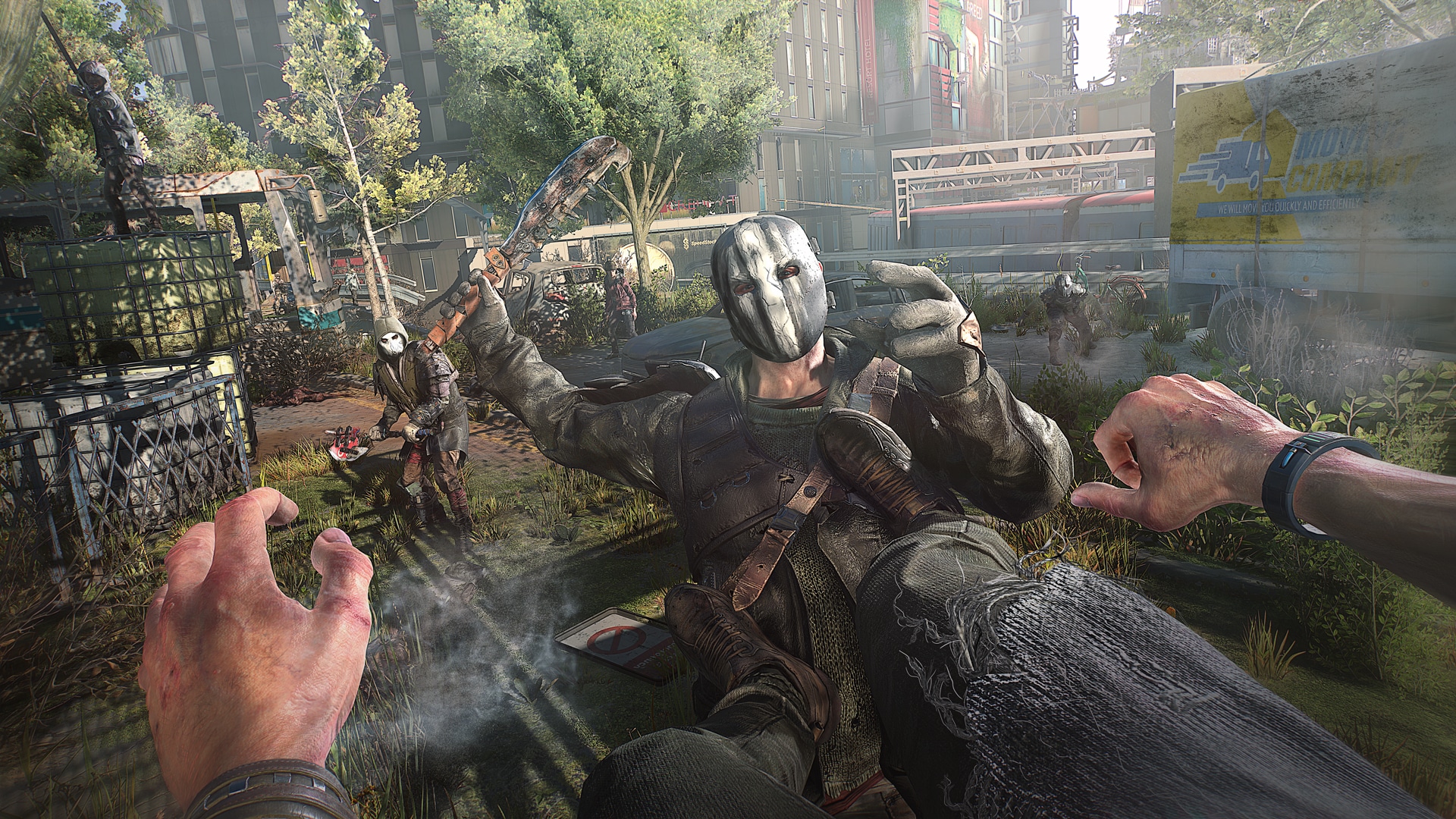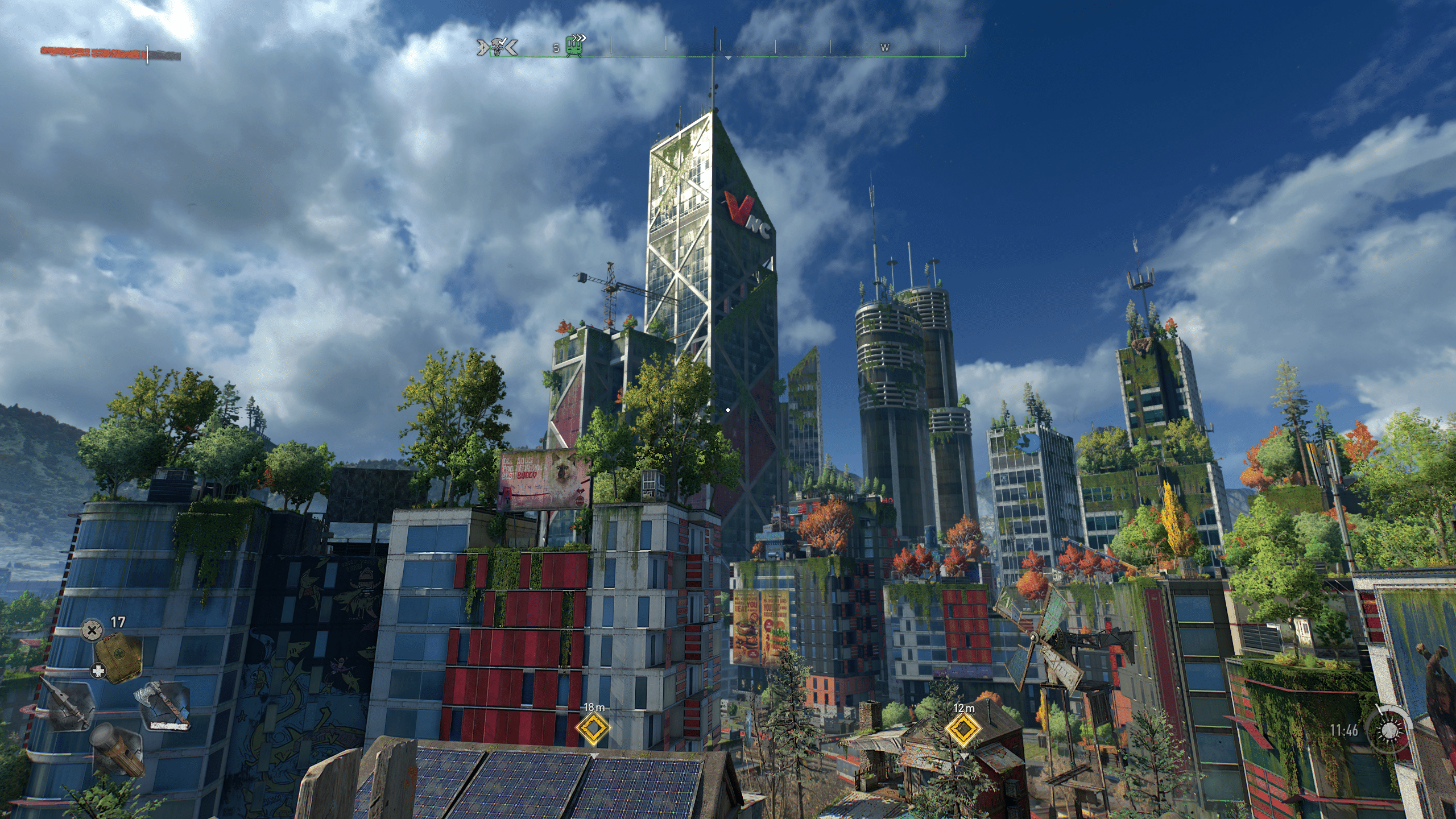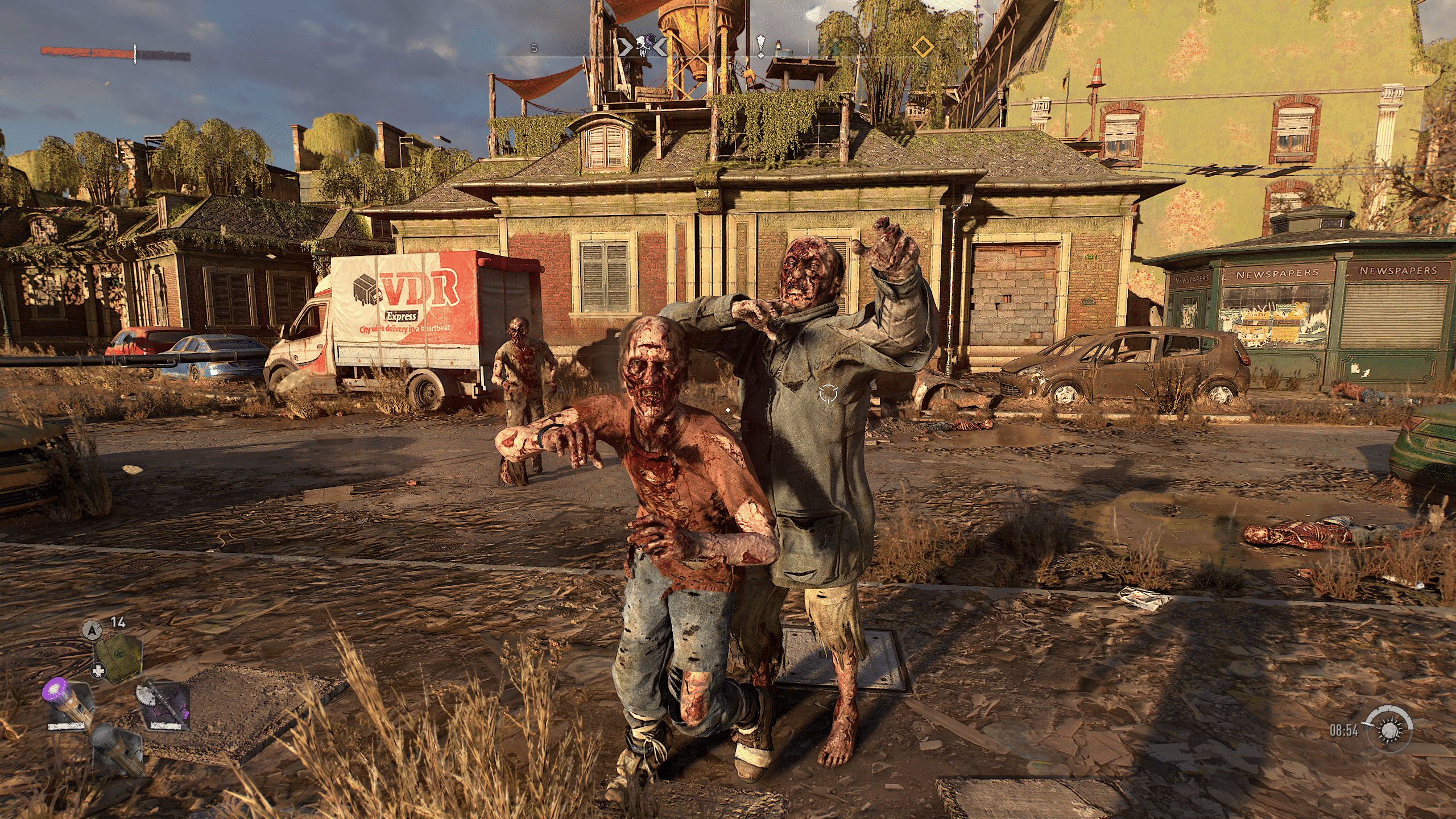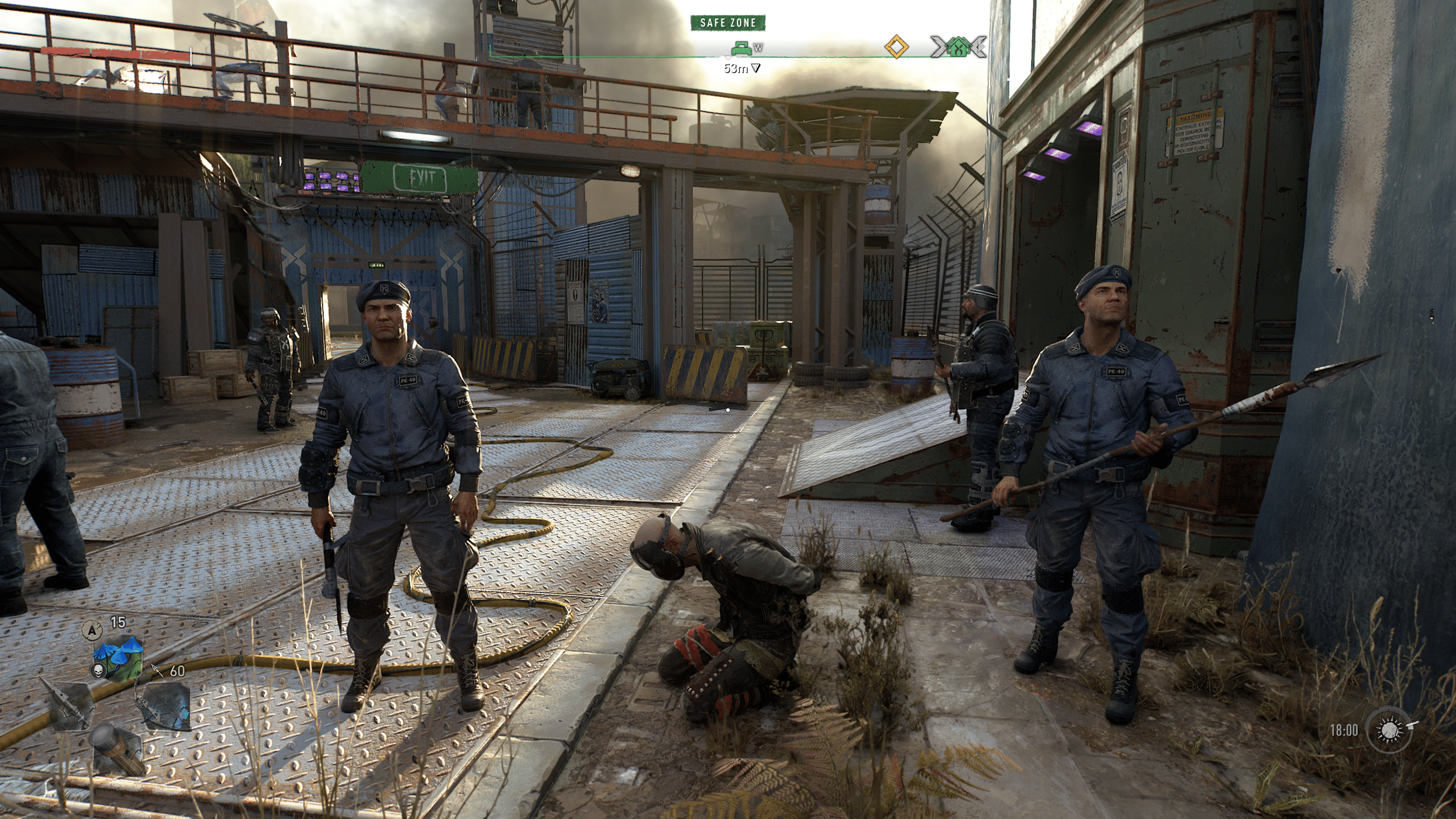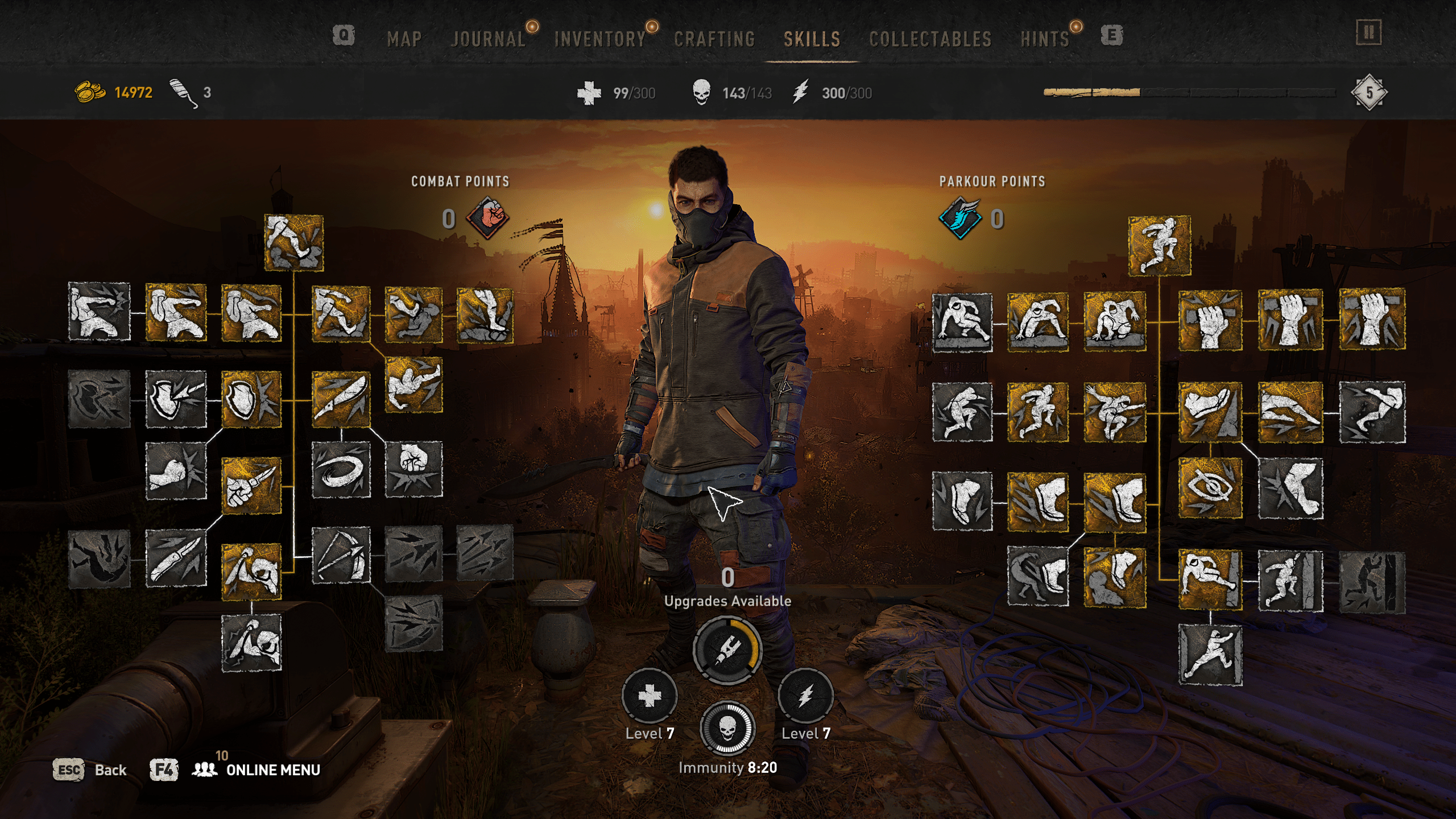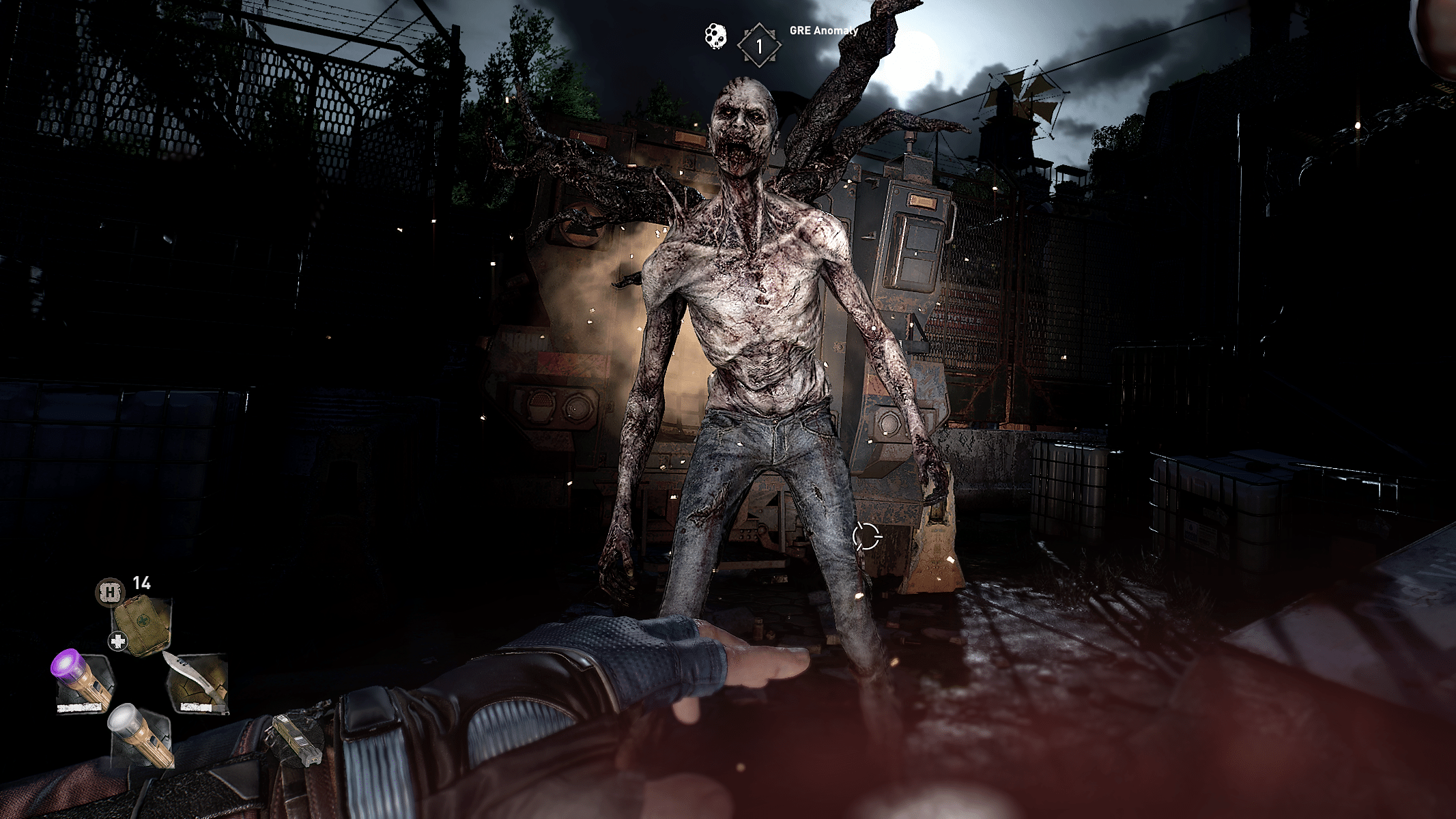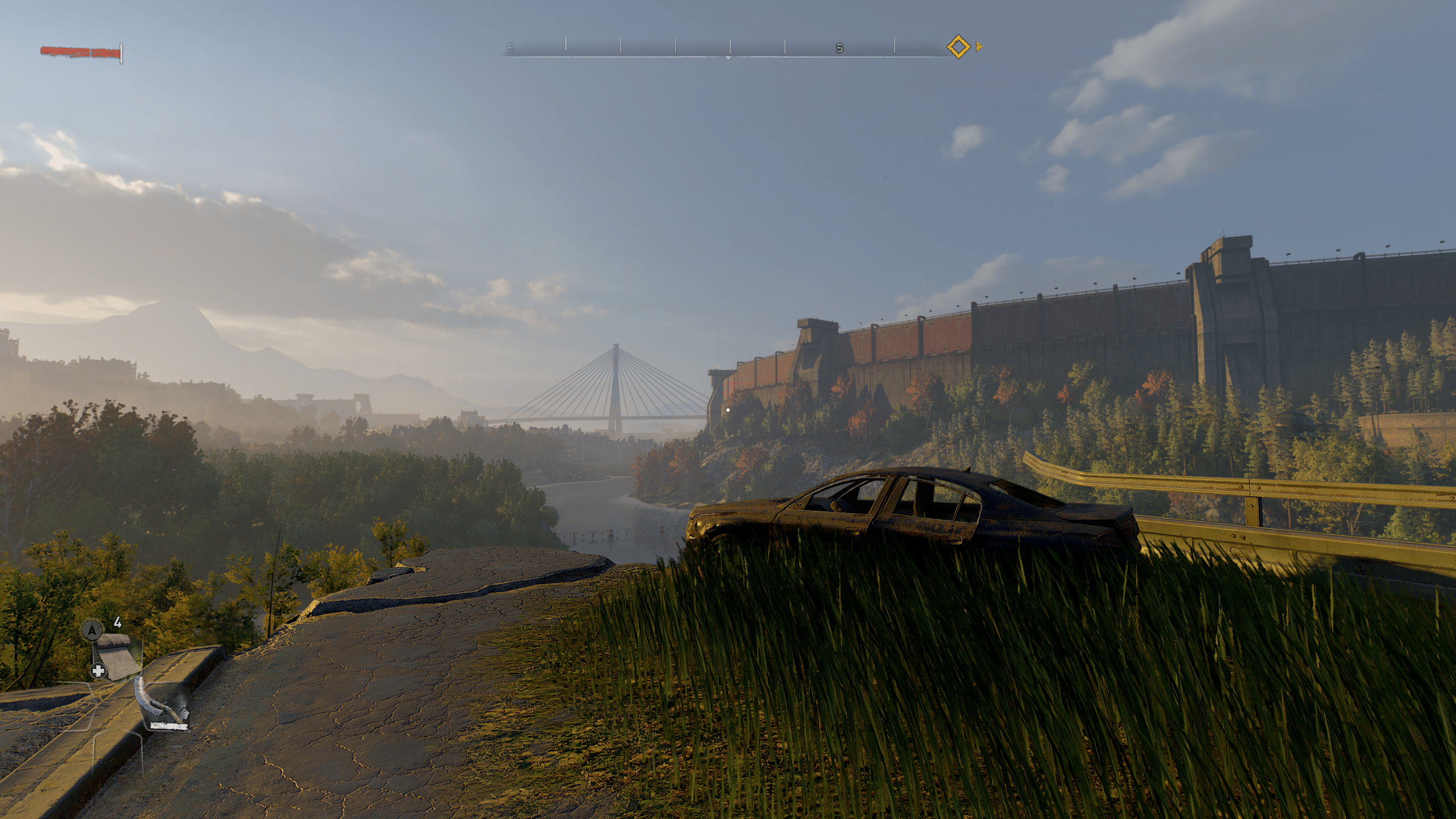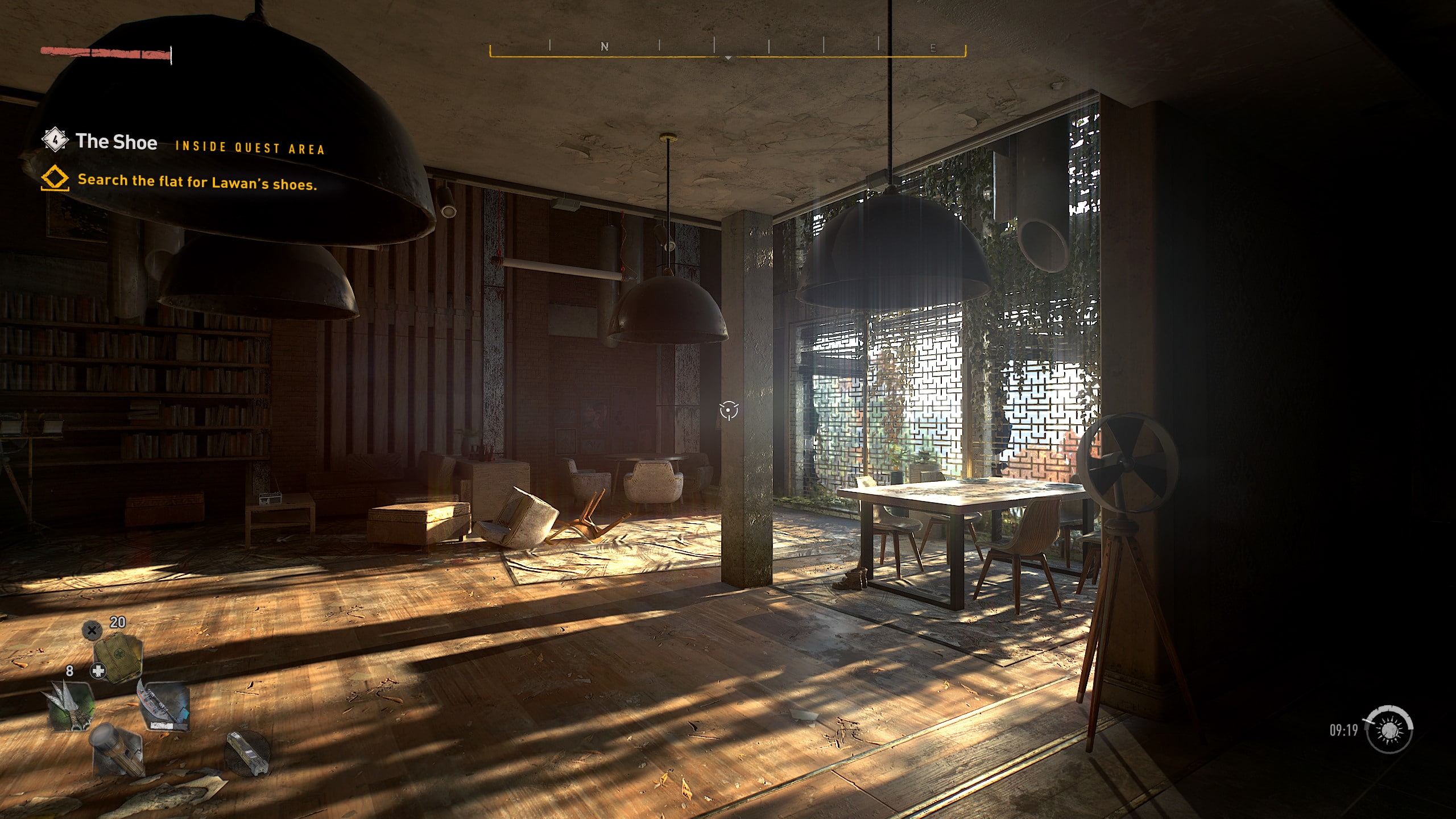When Dying Light 2 was announced at E3 2018, Techland promised a sequel where every decision mattered, and one where your choices would affect the world around you. Initially scheduled to release in early 2020, it has since seen multiple delays, and rumors have been swirling of a troubled development cycle. Some started to question whether the game would come out at all. Almost four years after it was announced, it’s finally releasing on February 4. The big question here is: so did Techland deliver on its promise?
Welcome to Villedor, The Last Hope for Humanity
Dying Light 2 is an open-world, narrative-driven zombie game, which features a unique parkour system that you’ll use throughout the game. This parkour system is what originally made the first game stand out so much, in an otherwise oversaturated genre. The game is played in first-person, and can be played from start to finish with up to four players cooperatively.
I’ll cut right to the chase: if you were a fan of the first Dying Light, I think you’re going to absolutely love Dying Light 2. It improves on the first game in practically every way and does so on an even larger scale. Techland have set their ambitions much higher with this title, and in my opinion, they’ve succeeded nearly every step of the way. Thankfully, it also does so while achieving a smooth, mostly bug-free experience on both PC and consoles.
To be clear: this is no Cyberpunk 2077. There was some concern that would be the case after the delays and rumors of a troubled development. Rest assured though, if all you want to do is play the main campaign, maybe do some side quests and knock out a few parkour challenges along the way, you will most likely experience very few, if any, game breaking bugs. For those that are looking to 100% the game however, be warned that there may be some issues at launch. We’ve reported all of these bugs to Techland, so we hope to see them fixed soon.
Story
Set 15 years after the events of Dying Light, Dying Light 2: Stay Human puts you in the shoes of Aiden Caldwell, as he searches for his younger sister, Mia. His search takes him to the city of Villedor, where he hopes to find the man who experimented on them as children, in an attempt to learn his sister’s whereabouts.
The Harran Virus has now mutated and has spread even farther across the globe. This new mutated virus is one that is resistant to previous treatments, and the Infected have now taken hold of nearly every major city on Earth. Villedor is the last human sanctuary.
From the offset, it’s clear that Dying Light 2 is going to offer a much better narrative experience than the original. It feels grander in scale, and the campaign is a lot more focused. True to their word, the many interweaving storylines in Dying Light 2 ultimately lead to tough decisions that you’ll have to make throughout the story. Villedor’s three main factions all have their own goals, and there are pivotal decisions you’ll have to make that will align you with one faction, while possibly angering another.
These decisions aren’t just fluff either. Many of these choices will completely change your playthrough. There was a lengthy mission that my friend completely missed based on a single choice they made. Likewise, the mission I got was completely different from theirs. This is a regular occurrence throughout the game. From what we gathered, any decision with a timer is likely going to change your storyline in one way or another. Co-op play is going to be a must if you want to play through every story mission in one playthrough. We also counted at least four different endings, with tons of minor changes along the way. Choose wisely.
Dying Light 2 doesn’t feel like just another zombie game. In fact, the zombies hardly play a role in the story at all. In Dying Light 2, the Infected are simply an obstacle — not the entire plot. Instead of a story that revolves around the Infected, Dying Light 2 explores the aftershocks of the infection and how it’s affected humanity and the world around them. It’s now been over 15 years since the virus took over. What would a city like this look like? What would people do to survive, and what would their conflicts look like? While on its face this is just a story about a man trying to find his sister, to me, that is the true story of Dying Light 2. In a genre that has been done to death, Dying Light 2 stands out even from its predecessor, by making the story about the people, and not about the Infected. The best way I can put it is this: the first game felt like a zombie game with a story. Dying Light 2 feels like a story game with zombies.
Villedor is split up into three main factions. There are the Peacekeepers, who have chosen to take up arms and form a pseudo-police force. Then there are the Renegades, who resort to violence, and take the things they want by force. Finally, there are the Survivors, who are just trying to get by, by building a peaceful community and watching each other’s backs. While the story primarily centers around the Survivors, you’re going to have to interact with all three of them throughout the game and navigate your way around them on the quest to find your sister.
For those that have played the original, you’ll probably notice that Dying Light 2’s story feels a lot more linear. While it is absolutely still an open-world game, the way the game is structured makes it hard to find a good time to put the main campaign down. Each main story mission transitions perfectly into the next. This is a good thing in my opinion. You’re still free to do side missions and explore the map whenever you want, but like I mentioned before. the story feels a lot more focused, and it leads to a narrative that feels stronger overall.
Dying Light 2 also has a wide cast of characters, all of whom play an important role in the story. At times, you’ll have to decide which characters to side with, which can lead to a negative outcomes for the other. The voice acting throughout is fantastic, and is headlined by actress Rosario Dawson, who plays a surprisingly large role in the game.
Overall, while I wouldn’t call it a masterpiece, Dying Light 2 has a surprisingly complex and well written story, with great characters, fully branching storylines and tough decisions that actually affect the narrative. Side quests are pretty good, and while there are certainly a few plot holes, the game comes to a satisfying conclusion and is well paced throughout. I finished the game in just over 27 hours, and not once did it feel like the game was dragging, or that I was rushing to get to the end. As someone who prefers games closer to 10 hours, that is exceptionally rare for me, and it speaks to just how good of a job Techland has done.
Gameplay
Gameplay in Dying Light 2 is built on two main pillars — combat and parkour. The entire skill tree is dedicated to these two things alone, and you’ll be doing one or the other for basically the entire game. So how do they feel?
Combat
Dying Light 2 has a heavy emphasis on melee combat. I couldn’t find any sort of ranged weapon until over halfway through the game, and even those were mostly limited to bows. There is technically a sort of shotgun in the game, but it is extremely fragile and pricey to craft. For all intents and purposes, this is a melee combat game first. Don’t expect gun combat to be as commonplace as it was in the first game.
Melee combat can be tough to get right in a first-person game, and I think Techland has done a pretty good job here. It isn’t perfect — hitboxes can be wonky, and some of the parkour-based attacks like the dropkick can be difficult to land. But overall, the melee combat feels satisfying and it’s serviceable as the game’s primary form of combat. There’s a block, a parry, and a dodge, and your arsenal will grow even more as you unlock new skills.
Enemy AI is pretty decent too. They can duck and dodge your swings and they have varied move sets that differ based on the faction or type of Infected. I found the game to be a genuine challenge as well, even on Normal difficulty. Some of the tougher enemies hit like a truck, and you’re almost always going to be outnumbered. Thankfully, health kits are plentiful, so you aren’t going to be desperately searching for resources or anything — just expect to die a few times.
Speaking of Infected, they’re a bit tougher now too. Even the weaker ones have become a lot quicker and can be difficult to predict. There are also several new species of them, each with their own unique effect. And just like in the first Dying Light, getting chased down by a Volatile is as terrifying as ever.
Parkour
It wouldn’t be Dying Light without parkour. This is evidenced by the fact that half of the game’s skill tree is strictly dedicated to improving it. Thankfully, the parkour in Dying Light 2 feels great. The entire world has been built around it, and there is tons of verticality. Animations have been improved, so it’s always clear exactly where you are, and what exactly is happening. This is even more impressive considering the game’s first-person perspective.
This isn’t your average video game parkour either. Parkour in most games usually amounts to holding just a single button, or holding one direction on the joystick. Dying Light 2 is more akin to something like Mirror’s Edge, where the parkour actually requires a certain degree of skill and creativity. Just like in the first game, some of the most enjoyable activities are the Parkour Challenges, which require you to hit a set of checkpoints within a certain time limit. You’re awarded a medal based on how fast you complete the challenge, and once you start one it’s tough to put it down until you get the gold.
Parkour In Dying Light 2 builds upon the first game’s excellent base with new additions like the Paraglider and a few slight tweaks. Movements feel properly weighty, but snappy and responsive at the same time. All of it makes traversing the open world on foot simply a joy.
Open World and Exploration
One of the things that makes Dying Light unique, is its day and night cycle. Unlike many other games, nights are actually dark without your flashlight on (pitch black in most cases). There are also more Infected out at night, along with the trademark chase mechanic that will have you running for dear life if you’re detected by a Howler. These all return in Dying Light 2 and it makes for one of the most impactful day/night cycles in gaming.
To add to this though, there’s now something called the Immunity Timer. When traversing the world at night, leaving the safety of a UV light will trigger a timer that starts counting down at the top of your HUD. When this timer reaches zero, you die. I wasn’t a fan of this mechanic. While you can replenish this immunity timer with consumables, it ends up being more of a hassle than anything. Having to find a UV light to stand under every five minutes limits night exploration heavily and is especially painful considering there are entire buildings you can explore, and activities you can participate in only at night. I suggest stocking up on Immunity Boosters as soon as possible if you plan on doing anything at night, as they’re much more potent than the “UV Shroomz” found growing in the wild.
Aside from that, there are a decent amount of collectibles to find, and a wide variety of things to do around the world. From the windmills and safe zones, which serve as camps and additional UV points, to the large bandit camps and military caches which reward high quality loot and Inhibitors, which are used to upgrade your health and stamina, as well as increase your immunity timer.
Immediately upon booting up the game, I noticed how much more impressive the world looked. Even within the same town, there’s a lot more variety in the environments. While the first Dying Light was mostly just limited to urban areas, Dying Light 2 has everything from forests, to wastelands, skyscrapers, and more.
They also seemed to have gone for a more distinct art style in this game. The world is bright and very vibrant during the day, and at night UV lights dot the landscape, coating areas in neon purple. In fact, it can almost be a little too vibrant during the day. There is a heavy amount of bloom used and the sun can be blinding at times. Still, I appreciate the fact that they’ve tried to make the game look unique.
One thing that the game lacks is any sort of manual save function. Without that feature you’re at the mercy of the auto-save system and unfortunately, checkpoints can feel few and far between. After dying or restarting the game, I sometimes had to to travel hundreds of meters just to sit through a cutscene that I’d already seen. While no manual saves is understandable for an online game, without them, checkpoints have to be frequent. It doesn’t feel like they got the balance quite right in this game. Hopefully it’s something they can tweak later, but for now don’t expect the game to auto-save in the middle of any activities.
Graphics and Performance
On PC, I averaged around 120 frames–per-second at 1440p with an RTX 3080 TI and a Ryzen 9 5900x. I played the game at the highest settings for most of the game, minus ray tracing.
There are a total of five different ray tracing options available on PC. They include ray traced reflections, global illumination, sun shadows, ambient occlusion, and even an option for a ray traced flashlight. This is some of the most expansive ray tracing I’ve ever seen in a game. Most games may have one or two these, but rarely do they have them all. Unfortunately, that does come at a heavy cost. Turning all of them on cut my frame rate in half, down to around 60fps, occasionally even dipping below. Even turning just one of them on dropped my frame rate by about 20%. In a game with as much movement as this one, I decided to opt for the higher frame rates instead.
Furthermore, aside from the massive performance hit, I really didn’t find the ray tracing to be all that noticeable during gameplay. In side-by-side comparisons, the ray tracing definitely makes scenes look more realistic, but while I was actually playing the game, I tended to prefer the punchier image, even if it wasn’t as dynamic. It still looks great.
Dying Light 2 also supports both DLSS and AMD FSR. With DLSS, I was able to squeeze about 90fps out of my rig with RT on, but again, I didn’t think it was noticeable enough to warrant the massive frame rate hit. With that said, I expect even mid-range builds should be able to hit 60fps at lower resolutions, especially with DLSS.
As for console, on PS5 and Xbox Series X|S there are three performance modes. Quality mode offers the highest possible graphical settings (including ray traced shadows), while Resolution mode targets native 4K at slightly lower settings. Both are capped at 30fps. There’s also a Performance mode which aims for 60fps at a lower resolution.
Hands down, Performance mode is the way to go. In a first-person game with this much motion, you’re going to want the smoothest experience possible. The game still looks good in Performance mode, and we found it to offer the most stable experience. Resolution offers a sharper picture, while Quality mode pushes improved lighting, as well as ray traced shadows. The shadows are a huge difference if you actually stand around and look at them, but again, for a game that is focused on fast movement, I don’t think halving the frame rate is worth the cost. One thing that carried over across all three modes, however, is a slight screen tearing issue. This wasn’t a huge deal, but it was noticeable enough that we felt it deserved a mention.
Overall, Dying Light 2 performs well and has impressive visuals. On PC there are plenty of options available, and it’s well optimized considering how good it looks. On PS5, the Quality and Resolution modes both hit 30fps , but from our experience, the 60fps Performance mode is the smoother, more enjoyable experience.
The Verdict
While Dying Light 2 improves on its predecessor in nearly every way, occasional bugs hamper the experience and a few of the gameplay changes are ones I could have done without. Still, if you’re someone who’s been looking forward to the game, nothing that I experienced in my nearly 30 hours with the game was a complete deal breaker, and in fact I enjoyed my time quite a bit. If you’re someone that’s been on the fence, or perhaps mildly interested in Dying Light 2, I definitely think it’s an experience that’s worth your time, and one that stands out amongst the crowded zombie genre. If you were a fan of the original and have been eagerly anticipating Dying Light 2, it’s an easy day one purchase, and one that delivers on every promise that Techland set for it.
Score: 8.5/10
Pros:
- Great visuals.
- Well optimized.
- Good story that improves on the first game.
- Impactful choices with excellent writing.
- Parkour system with new additions like the Paraglider that make traversing the open world fun.
- Plenty of content, with long term support confirmed.
Cons:
- No manual saves with auto save checkpoints that aren’t frequent enough.
- The game is structured quite similarly to the first game. Even some of the story beats felt similar.
- Occasional bugs at launch.
- Immunity Timer makes exploring the city at night a hassle.
Dying Light 2 review code was provided by the publisher. Main version tested was PC. You can read SP1st and MP1st’s review and scoring policy right here.
